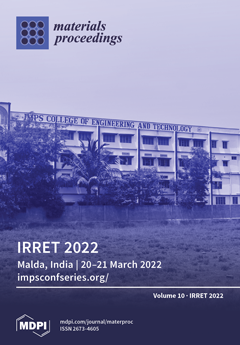Globally, cities are feeling the effects of climate change: rising temperatures, droughts, heatwaves, and more extreme storms are impacting water quantity and water quality. Roughly half of the world’s population are now living in cities. By the year 2050, that figure is anticipated
[...] Read more.
Globally, cities are feeling the effects of climate change: rising temperatures, droughts, heatwaves, and more extreme storms are impacting water quantity and water quality. Roughly half of the world’s population are now living in cities. By the year 2050, that figure is anticipated to rise to as much as 80 per cent. If we want our cities to be sustainable both locally and globally, we need to make sure that we use fewer natural resources and generate less trash. The built environment of a smart city incorporates digital, human, and physical components. It is critical to discover appropriate assessment procedures given the rapid urbanization and wide-ranging innovations. Due to impending scarcity, we must move now to increase water treatment and distribution efficiency while decreasing consumption. Risk assessment, mitigation, warning, and forecasting are all critical components of flood risk management going forward. Institutional and governance measures are also important. By providing fresh insights, this research contributes to the corpus of knowledge on smart city mobility. A smart water city improves the quality of life of citizens by solving existing urban water problems based on various technologies and ICT technologies throughout the urban water cycle. It not only provides individual solutions for conventional water management, such as drainage, water treatment, and wastewater treatment, but also improves comprehensive water management through the restoration of the urban water cycle, waterfront usage, and intelligent water management. Furthermore, in a smart water city, ICT-based intelligent technologies complement and improve existing infrastructure and technologies for water management within the whole urban system. They are a supportive tool for the different functions of water in urban settings. This understanding highlights that smart water cities concern not only the provision of drinking water and sanitation services for urban water users, but also other urban water functions such as urban water restoration, waterfront usage, and integrated water management. This paper examined the use of integrated, real-time information and ICT solutions, such as sensors, monitors, geographic information system (GIS), satellite mapping, and other contactless, intelligent tools in both urban and agriculture water management. The paper presents evidence of how SWM has provided solutions at different scales and across various urban and rural contexts, and how they have impacted the social, economic, environmental, governance, and technological spheres.
Full article



